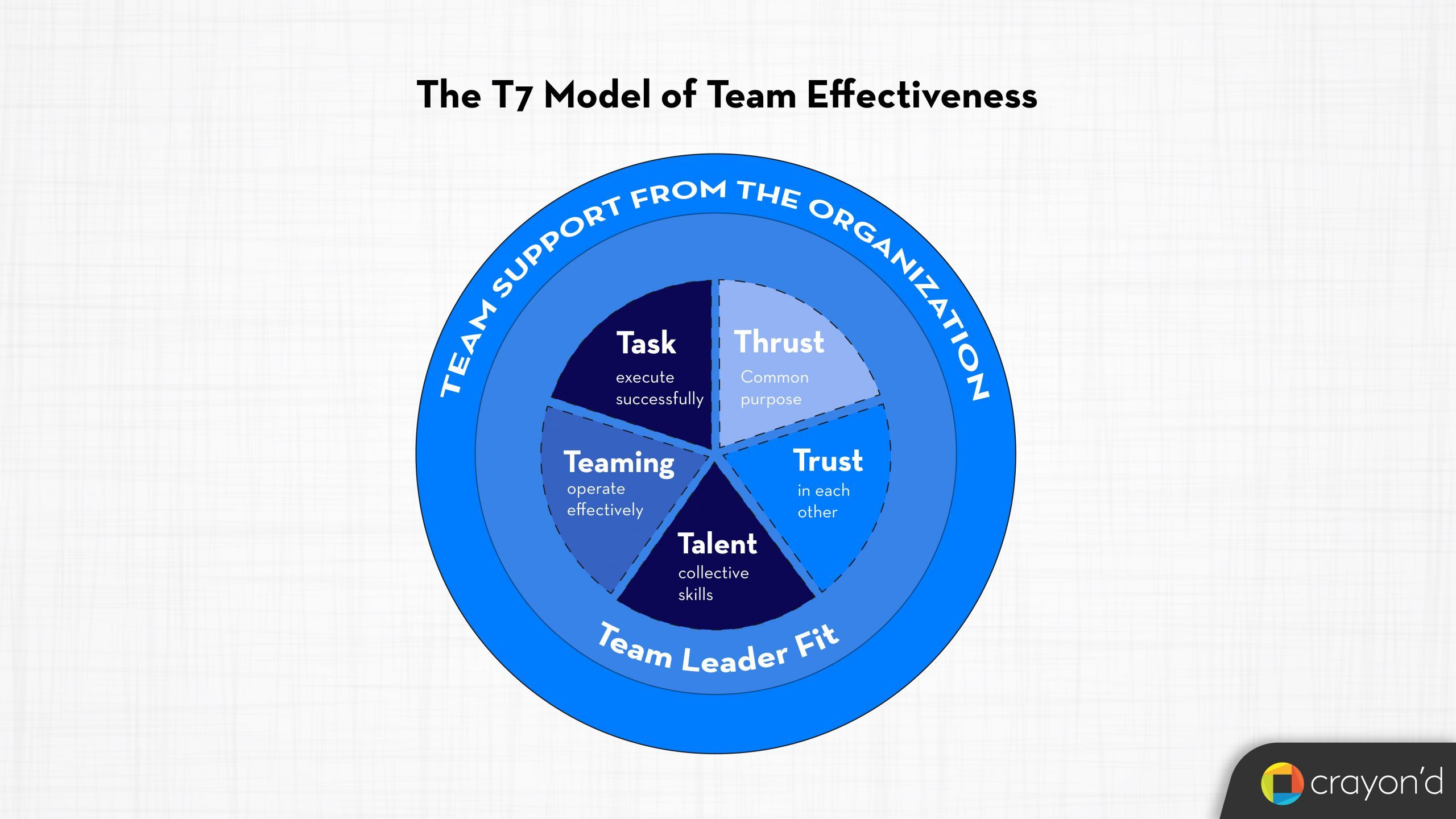Building an organization is such a long and strenuous process.
Hiring the right people, getting them to mingle with each other, and driving them to work — there is just so much to get right.
As an aspiring entrepreneur, the sheer number of variables is bound to tire you.
Efficiency is one of the most used words when it comes to business.
This means that you know that you should have an efficient team.
But, you might wonder why that is necessary.
We are here to address exactly that.
Let’s jump into it!
Why do you need an efficient team?
As an entrepreneur, you are already quite aware about the hardships of going at it all alone.
When skilled people with a similar passion team up, lots of great things can emerge.
But, merely putting them in the same room would not automatically reap results.
You would have to introduce processes, behavior, and aim to make them efficient.
Why is efficiency so important?
Good work happens when the underlying processes are smooth.
If every task has a roadblock and if every interaction requires too much mental effort, then employees will get demoralized quite quickly.
More than just efficiency, it is about having the team interact better and build their own dynamic so that they can start solving problems.
Innovation springs out when minds are unshackled and free of stress.
The better the team processes, the more results the unit would yield.
And all of these would happen in a shorter timespan, giving you more time to focus on other market gaps.
10 traits of high-performing product teams
Effective conflict resolution
If you are part of a team, chances are that you do not agree with everything that other members decide or validate.
High-performing teams and their members needn’t tick all the boxes at all.
What a high-performing team does differently from a poorly performing one is agree to disagree and reduce unnecessary, bitter confrontations.
Time is what we are optimizing, and unhealthy conflict is a major distraction.
Everyone in your team should understand that the ultimate goal is building a valuable product.
Personal differences should therefore not taint the process and slow things down.
In case any conflict does arise, there is always an amicable way of resolving it.
Anything that devolves into a fighting match or so is never productive.

Being a unit at all times
Personal rapport is quite important for enabling effective team work.
The general consensus is to have a work-life balance and to compartmentalize personal and professional relationships.
But, your colleagues are also people with intricate lives.
A complete involvement is not necessary, but spending some casual time to increase the amicable bond is beneficial.
This is because the closer you feel to someone, the easier it gets to understand them and work with them.
If an entire team adopts this behavior and tries to get to know each other better, then ideas and innovative work would churn out on its own.
Keeping each other accountable
It does not feel right to ask someone if they are working, or how long they would take to finish something.
A team’s output depends on every individual doing what they said they would.
Delay in the completion of one task can derail everything else at times.
A high-performing team always keeps tabs on what everyone is working on.
This does not need to take the form of surveillance.
A casual question like, “how is the latest project going on?” or something would give the other person the necessary nudge to complete the task.
Ultimately, every member of an efficient team makes it their duty to ensure that everyone is doing well and working toward the shared goal.
Transparency
Transparency is the hallmark of any efficient work process.
When team members honestly express the difficulties they face while working, or opinions they might have about the product feature, and so on, it reduces the friction and speeds things up.
With everything out in the open, everyone can agree to work around the issues, solve them, and move ahead.
But transparency is more than just mere honesty.
It is about sharing every aspect of what you are doing when you are at office.
Well… not necessarily all aspects, but anything that is bound to affect the overall quality of the product.
For example, someone might feel self-conscious about their headaches and continue to work.
But all it does is affect their health further.
And obviously, anything that is worked on during that state would not be that great.
Bringing transparency to the work environment will make it easier for people to be their true selves and put out the best work that they are capable of.

Aligned to a shared vision
Product vision is very crucial for success.
More than anything, a good product vision brings people together.
Humans are driven to pack together and work toward a common goal, be it finding food or building the next awesome product.
When everyone is on the same page, it takes no time for team members to form bonds with each other and start working.
A team that is aligned to a common goal is also one that is quite efficient. This is because everyone knows why they are working, and they try to contribute toward the product.
Not having a common goal can increase chances of effort duplication or individual projects that add no value on the overall.

Encouraging of each other
Camaraderie does not end with mere casual banter.
Once you get to know your teammates well, you should constantly root for them.
This can take the form of appreciating when they do something great, ask them about their day, and amicably debating ideas.
Encouragement is a key driver of making people get out of their beds.
If the team that someone works with is constantly critical or super-professional, then s/he would feel the whole endeavor to be fruitless or mechanical.
Ultimately, we are all driven by emotions, and a few good words can trigger great results.
Complementary of each other’s skills
Every person has their weaknesses and strengths.
An efficient product team is one that takes the best of out of everyone and puts it to work.
Also, they try to complement those weaknesses by matching the right people together.
One might be great at designing user flows but bad at understanding colors.
If their team has someone who understands color well, then the overall output becomes flawless.
This is what collaboration is all about, after all.
A high-performing team is a vehicle with harmonious gears — take even one out and the whole thing stops moving.
Trustworthy
Trustworthiness and transparency are two sides of the same coin.
Trust increases the more everyone is transparent.
When you know that your teammate means well, is committed to delivering their dependencies, and wants to enable you, then you feel comfortable.
You trust that person and aim to collaborate more with them.
A team becomes efficient when everyone amplifies this same sentiment.
Poorly performing teams work with next to no trust. Power play, office politics, idea snatching, bad-mouthing — these are all counterproductive and make everyone bitter.
Ultimately, in a toxic environment, no one ever strives to deliver their best.
Objective and clear, from the outset
Product vision aligns people.
What makes them more efficient is a proper plan that is worked and agreed upon by everyone.
Tools like product roadmaps are the way to go.
A good team is generally driven to work and contribute to the goal.
Without a plan in place, however, two people might end up working on the same thing or produce results that are way off than the expectation.
More than that, having a roadmap decreases the chances of confrontation and amplifies implicit accountability.
Just a bucket full of wins.
Growth mindset
No one is born with perfect skills.
We develop them over time, and in a high-performing team, everyone recognizes the importance of giving space to someone who is learning.
They realize the value of not pushing them at the moment because the work they would produce in the future would be worth a lot.
When a team understands this, they never rely on harsh criticism to drive results.
The growth mindset is when people realize that there is always room for improvement.
This means that a high-performing team is always trying to evolve and is ever-ready to accept its flaws.
Being receptive to criticism comes on its own.

6 Measures to make your product team more efficient
Eliminate bottlenecks of every kind
Sometimes, bad processes get continued to be used despite being inefficient or a roadblock.
Most times, the reason is “because this is how we have always done it”.
Tradition is hardly a good excuse to maintain and follow practices that do not enable employees, waste their time, or actually slow them down.
These can be anywhere, from business processes to general work-environment rules.
Every bottleneck and its unnecessary workaround is time and creative energy that could have been spent on solving real problems.
Adopting lean methodologies and best practices is a head start.
Reducing redundancy
The commonest problem every organization and team faces is this.
Redundancy takes several shapes. Two people writing the same code, building the same feature under different names, not re-using code, conducting unnecessary meetings… the list goes on.
Clear communication, a proper roadmap, and a general collaborative spirit can eliminate most of these problems.
Most of all, always try to decrease process and effort duplication wherever possible.
Stop insights from being siloed
Every team member knows something that the other person does not.
Brainstorming sessions can sometimes bring out such ideas, educate everyone, and improve the whole team.
But brainstorming is generally limited during the initial stages of development.
This hugely limits how much knowledge is shared between people.
By conducting casual knowledge-sharing sessions regularly, everyone can benefit from varied perspectives and work better.
Set expectations for communication and transparency
It is one thing to say that your organization values transparency.
It is another to actually enable it.
Only via long and hard conversations with everyone in your team can you reach the point where they are comfortable with expressing their fullest selves.
Every task works well when the expectations are made clear.
If a product can have its set of features that need to be built, then a team can also have its set of expectations that should be communicated no matter what.
Without those, it becomes hard to understand if everyone is on the same page.
It also becomes unclear if people mean what they say.
Onboard team members with the set of expectations and you will have a less uncertain ride.
Empower people
People do their best work when they know they are in control.
This means letting them have the ownership of anything they do.
Reporting is one thing.
If they constantly need to get reviewed via meetings or sessions, then that is counterproductive.
Not only does it take too much time to complete a task, but it also will demoralize them.
It will make them doubt their judgement and slow their creative processes down.
Weekly sprints via the roadmap will anyway check if they are on the right track.

Implement the 7Ts of Team Effectiveness
The T7 Model identifies five key traits that make or break a successful team:
- Thrust: the shared product vision
- Trust
- Talent: skills needed to perform the tasks
- Teaming skills: Degree of extroversion, empathy, and so on
- Task skills: The diligence and discipline to actually complete a task
- Team leader fit: Someone who understands everyone completely and acts accordingly
- Team Support: Knowing that everyone has your back

You could print this chart out and create custom KPIs to track and improve the core efficacy of your product team.
Efficient product teams Vs mediocre product teams

Bottomline
People work the best when they are placed in the right environment along with supportive peers.
As true as that sentence is, it is quite hard to actually foster good values and processes in a team.
Efficiency follows when the morale and motivation of a group is high.
Ultimately, everything boils down to being empathetic and adaptable.
What works for someone will not for someone else, and, to run an efficient team, you would need people who are perceptive of diverse working styles.
Overall, we hope that you get to build the efficient team that you hope for!







Add comment